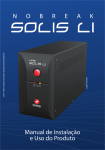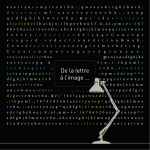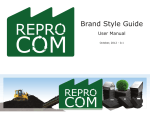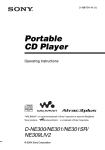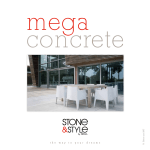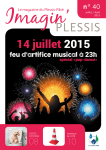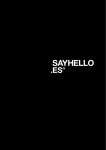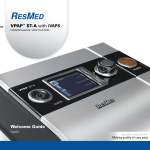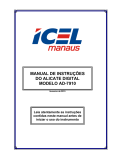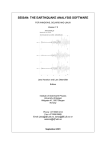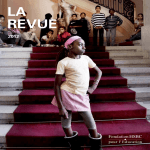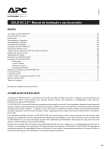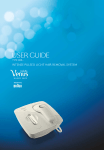Transcript
BUILDING BETTER PARENTS Logo Overview Stationary wordmark symbol BUILDING BETTER PARENTS December 17th 2010 Dear Sir, BUILDING BETTER PARENTS Alibea prerum faccum sunt hiti ut exeror ra quam, voloreperi qui am nestibus expe non comnis sant laborpo repero inumquissit dolorempor abo. Itae necus volore ea ium inciis autectassit alit initatem dolupta quaturibus iur ad quia aspe vit ventin explabor asped est unto volorpore nimporrum que nonsed magnis deligenis asi dolorro blanima ximinullorum aperorum faceseaturis essin rentium ut volupitem quam, ommo mint deristet placearum sam, aut venimet laccus recero conestotaque nonecta doluptat hilit, aut alis nis dollisi millest quatem quuntis voloribea cuscitam re nost es voluptatio. Omnisimusam dem ium, con pe sin et quostrum illenia veruntiiscia aut faccaec eperaes earisci isciis eum exeri dolupta dolore qui arit ra. logo Fugia dolor aut qui occatem volupta adi beatus, quis estinus nimust, apitiae pedigenecus, ant omnis pra doles quossitaquis ad et fugit facid ut ullendae. Occatem apisin conorem remor esciet lab iuscia num hicid qui officiis et asimus moluptat mollupta vent autem quadoluptiis num nullaboris simint exces aut ex expediasit volorehendem ipsam ne quistis doloruptam BUILDING BETTER P ARENTS fugiatus autemquam ipsanti deniminis nissimagnis velest etusanihicia atureperit ommos de nullameevendunt la secum rem es eum eos acea quatur, accullorate explab iust aut et dollectio estorem sam hillauta porundis ipsame non con nonsendit aut re vit eos dolestibus. The Madison logo is made up of two components, the INVITAION INFO. Bus quod eumquos sitius simenet que simusande ernatur? Nam, ipis sae cullectorum ipsaperi dundignienis sum res quaepedit quis as ilitati beribusaero et voluptibus aut remod et fugitis eosse pero idus et ut hariaspellit aut volor aut dolorest ut re, sequas sus eatumquia consequam is ventem aut atque eum et is mo magnis ipistibus min ratae. symbol and wordmark. These two elements are set in Year End Exhibition Niagara College Graphic Design / Et maionserem eiuntia que nos consequi dolorer chicieni sam inulluptatia se net molu ptat Um facessinis dero cone qui sum labo. Equunde libusdam ipsundu sandisquis plique velmodion corem quatior aut aut apicae laccull esciend entibust, consequ ibuscitat que num their proportion. They must never be altered. Art & Design Fundamentals /Photography Exhibition Date: April 00–00 2011 26 Trafalgar Rd. Oakville Ontario L3C 4ME Opening Reception: April 00 2011 — 7:00 All acceptable logos are available through Madison. BUILDING BETTER P ARENTS These logos must never be altered or reproduced Tag Art Gallery 214 King Street, St. Catharines 26 Trafalgar Rd. Oakville Ontario L3C 4ME Tel: (905) 123-4567 Fax: (905) 987-6543 www.madison.com Michael Garland 905.682.5072 tagartgallery.ca Creative Director manually in any way. 26 Trafalgar Rd. Oakville Ontario L3C 4ME Tel: (905) 123-4567 Fax: (905) 987-6543 www.madison.com RSVP to [email protected] 5 12 Herman Miller 20 1 /2´ 20 1 /2´ 29 1/2´ 17 1/2´ 67 cm 39 cm 56 cm 62 cm 73 cm 46 cm 49 cm The PlayStation Portable uses the common "slab" or "candybar" form factor, measures approximately 17 x 7.3 x 2.2 cm (6.7 x 2.9 x 0.9 in), and weighs 280 grams (9.88 ounces). The front of the console is dominated by the system's 11 cm (4.3 in) LCD screen, which is capable of 480 x 272 pixel video playback with 16.77 million colors. Also on the front are the four PlayStation face buttons , the directional pad, the analog 'nub', and several other buttons. In addition, the system includes two shoulder buttons and a USB 2.0 mini-B port on the top of the console and a WLAN switch and power cable input on the bottom. The back of the PSP features a read-only UMD drive for movies and games, and a reader compatible with Sony's Memory Stick Duo flash cards is located on the left of the system. Other features include an IrDA compatible infrared port (discontinued in PSP-2000 and later series), built in stereo speakers and headphone port, and IEEE 802.11b Wi-Fi for access to the Internet, ad-hoc multiplayer gaming, and data transfer. The PSP uses two 333 MHz MIPS32 R4000-based CPUs , a GPU with 2 MB onboard VRAM running at 166 MHz, and includes 32 MB main RAM and 4 MB embedded DRAM in total. The hardware was originally forced to run more slowly than it was capable of and most games ran at 222 MHz. However, with firmware update 3.50 on May 31, 2007, Sony removed this limit and allowed new games to run at a full 333 MHz. The PSP includes an 1800 mAh battery that will provide about 4-6 hours of gameplay, 4-5 hours of video playback, or 8-11 hours of audio playback. Official accessories for the console include the AC adapter, car adapter, headset, headphones with remote control, extended-life 2200 mAh battery, battery charger, carrying case, accessories pouch and cleaning cloth, and system pouch and wrist strap. Charging the Psp Never leave a charging PSP unattended. If the battery is not inserted correctly, the PSP will make a beeping noise. If beeping occours, unplug immediately. Re-insert battery pack. Be sure battery pack is inserted correctly. Consult user manual for more information. Plug into the AC adapter. The AC adapter will go in the corresponding slot on the side of the PSP. It is best to wait about two to five hours. Unplug your PSP. Make sure you do this safely by not tugging or ripping the cord out. Sony has included the ability for the operating system, referred to as the System Software, to be updated. The updates can be downloaded directly from the Internet using the Network Update feature, or they can be downloaded from the official PlayStation website to a computer, transferred to a Memory Stick Duo, and subsequently installed on the system. Updates can also be installed from UMD game discs that require the update to run the game. While system software updates can be used with consoles from any region, Sony recommends only downloading system software updates released for the region corresponding to the system's place of purchase. System software updates have added various features including a web browser, Adobe Flash support, additional codecs for images, audio, and video, PlayStation 3 connectivity, as well as patches against several security exploits, vulnerabilities, and execution of homebrew programs.[ It is currently at v5.03.] Volume Control Volume is controlled by the plus and minus buttons located on the bottom left hand corner of the psp. Adjusts the volume up or down. On/Off switch Turns Psp on and off Product Story A Shape that Sits Well Designers Charles and Ray Eames established their long and legendary relationship with Herman Miller in 1946 with their boldly original molded plywood chairs. The aesthetic integrity, enduring charm, and comfort of the chairs earned them recognition from Time magazine as The Best Design of the 20th Century. Time called the design "something elegant, light and comfortable. Much copied but never bettered."(A locomotive came in second.) In their search for a better way, Charles and Ray Eames developed an innovative technique for molding plywood. The process allowed them to bend wood furniture in new directions and give hard materials a soft look. The contours the molding process creates out of plywood fit the body's shape. The plywood has five plies, with hardwood inner plies. Natural rubber shock mounts absorb movement. Distinctive Design Design Story You can tell it's Eames at a glance. Lounge chair, dining chair. Both with wood or chrome-plated steel legs. Molding thin sheets of lightweight veneer into gently curved shapes gives the durable material a soft, inviting appearance. The chairs work just about anywhere—from homes and offices to schools and public areas. The chairs are offered with richly grained birch veneer in bright colors that recall the times when the chairs were introduced. The environmentally friendly aniline stains we use allow the wood's natural characteristics to show through. You can also have them in natural cherry, walnut, and light ash. The story behind the Eames molded plywood chairs makes clear just how big a role imagination and serendipity play in design. In the early 1940s, when Charles Eames was working on MGM set designs, he and his wife, Ray, were experimenting with wood- molding techniques that would have profound effects on the design world. Their discoveries led to a commission from the US Navy to develop plywood splints, stretchers, and glider shells, molded under heat and pressure, that were used successfully in World War II. When the war was over, Charles and Ray applied the technology they had created to making W ith all that our military does for us, does anyone wonder how our soldiers are? Aside from the close families and friends of those in the military, do the regular joe’s ever ponder over the life of a soldier in the Canadian Forces? For those of us that indeed care about the lives of our soldiers, and how life in the military has shaped them, we have the opportunity to look into the life of Mr. Michael Clark, who has served in the military for several years. Michael is originally from Georgia, and moved to Canada with his mother when he was nine. Except for the military, he has lived in Welland ever since. I had the opportunity to speak with Michael about his thoughts, feelings, hardships and life in general from within the military. You’re originally from Georgia, what made you feel the need to join the Canadian Forces? Originally, I just thought it was a good idea. I didn’t have any prospects at the time (11th grade, 16 years old) and never geared myself towards doing anything once I got out of high school. I needed to do something. I didn’t plan for anything after highschool, and when it came down to the wire, I just sort of went with the flow. I thought that I would get and stay in shape, and would make an easy go of things, as far as a career and money were concerned. What trade (position) did you pick, and why? I was given a lot of options of occupations I could join in the military. Originally I wanted to be an Infanteer, but was told that my eyesight was too poor. When I found out that I had many options, I would only look at the Army Branch (or Land Element)because I thought that was what I wanted most. I looked at multiple trades, but I picked signal Operator. The recruiting officer didn’t give me much information about it, but I assumed that my role in the military would be an Infanteer with a radio. Did training to become a signal operator meet your expectations? Yes, actually. I’ve been tossing the idea around for a couple of years now. It’s actually a running joke where I work; “Man. I want to change my trade; I need to do something else; I wonder what kind of job they’re going to get us to do today; Who’s ready for more cock?” And yes, we actually refer to our jobs/daily life as “cock”. It is a part of our training and military culture, but more so for my trade. We’ve learned that from the very beginning of our occupational training. You can understand why I thought of changing things. Like I said, it’s a running bad joke. But the fact of the matter is that I ain’t laughing anymore. When I learned that of my alcoholism, I knew that I couldn’t continue in a situation that I was dreadfully unhappy in, especially one that is quite persistent in it’s drinking culture. That being said, within the next year, I plan to be in a different trade. I’m not sure which one yet, but I believe it will be in the Air Force. I should mention that at this moment, I’m looking at Aviation Technician and Aerospace Control Operator. I can give you some basic information about those trades, and my interest in them, but not any detailed answers. Herman Miller, Inc. 855 East Main Ave. Zeeland, MI 49464 Herman Miller Where are you located currently? I live in Kingston Ontario. Does your current location have any affect on what you want to do next, as you mentioned the air force. Partially, yes. Kingston is really big on drinking, and I want to get away from that. But I also wouldn’t mind being close to my friends. So the former is much more significant. My occupational training was a different story all together. As I had mentioned, people that had gone through after me, lacked the personality and attitude one would expect from a raw recruit. That being said, it was also a fairly young course, and there was a lot of drama. Thinking back to those days though, I realize my alcoholism was quite obvious. There are days that I miss my mother a lot. Sometimes, I wish I could just go home, laze around the house, and play video games, and take road trips with my mother. I also miss my friends I had in Welland, and if I was there I’d be more aware of my level of contact with them. I have friends here, sure, but none that are removed from the military culture. The specific training for my course was obsolete. The course has since been re-worked as my trade and is becoming amalgamated with two others, Linemen and Land Communication Information Systems Technician (LCIS for short). This is going to change my trade significantly, but as far as the training that I knew I was going to be taking, I hated it. I also miss my best friend Michael, a lot more lately. It’s true what they say about few friends versus many acquaintances. Also, if I hung around him more, I might not worry so much about losing my own head. Experiences of Our Soldiers Is it safe to say you would like to change your current trade? affordable, high-quality chairs that could be mass -produced using dimensionally shaped surfaces instead of cushioned upholstery. When they found that plywood did not withstand the stresses that occurred where the chair seat and back met, they abandoned their original single-shell idea in favor of a chair that had separate molded-plywood panels for the back and seat. The process eliminated the extraneous wood needed to connect the seat with the back, which reduced the weight and visual profile of the chair and established a basis for modern furniture design. Sculpting a seat and back to fit the contours of the human body, they designed a truly comfortable chair that's suitable for businesses and homes. My basic training was alot of fun. Mind you, I didn’t begin right away. Because my fitness level was below military standards, I began a fitness program that lasted two months. I lost a lot of weight, and my overall fitness level became respectable, and I also learned a lot of the core military beliefs from the instructors there, that I don’t believe are being passed on as efficiently as others. There was too much hostility between course mates, and not a very nurturing environment for learning. In the end, I can’t say I learned a lot that I can use in my trade now, even less that I even cared to, and lesser still that will be useful in the future to me. Once I learned I’d completed my occupational training and was posted to my unit, the Canadian Forces Joint Signal Regiment, I would take courses related towards the computer-related positions of my trade, within dealing primarily with Microsoft Technology. That was where most of my useful knowledge has come from, which tied directly into my position in Afghanistan later on. 55 cm How does living away from your home in Welland affect you, as you live in Kingston currently. Don’t get me wrong, as much as I have left for me in Welland, I feel that it is better for me to be away and miss it, then to be there and want out. If you could be stationed anywhere in the world, where would it be, and why? As far as Canada goes, I’d like to be in Trenton, although I’m also interested in Halifax. But I’d really like an international posting to Georgia in the states, or overseas in Germany. Do you feel your time in the military has had a real positive affect on you? Absolutely. I’ve learned a lot about myself by overcoming a lot of obstacles and trials. If I hadn’t gone into military, I honestly don’t believe I’d be on a good road. If I had not joined the military, I wouldn’t have received the benefits to my health that I have on the forefront being that I went to a rehabilitation clinic in Nanaimo BC, and finally admitted that I’m an addict. That alone is enough to give me peace, knowing that out side of the military, I could have gotten into bigger stuff than just alcohol. It seems that you are content with your decision to be in the Canadian Forces, if you had the opportunity to do some thing differently, would you, and what would it be? Jedi Knight, but for a serious answer, I’d have to say to be a rock star. All I know is that I want to have fun doing my job, or at least enjoy it 95% of the time. I can’t think of a single job or career that I would hands down, be all for, without a seconds hesitation. I’m still young, and I don’t think I’ll know what I really want to do for a few years yet. So until that happens, I’ll be waiting for the Jedi Council to drive up in Metallica’s tour bus. May the rock be with you. Edited by Michael Garland Photography by Liz Storm Editorial 5.indd 1 3/23/11 8:40 PM GREENDAY will be playing in: New York, NY Radio City Music Hall Wed Sep 03 Holyoke, MA Mountain Park Mon Sep 05 Boston, MA Bank Of America Pavilion Sun Sep 06 Columbia, MD Merriweather Post Pavilion Sat Sep 07 Rochester, NY The Main Street Armory Fri Sep 09 Montreal, QC Metropolis Wed Sep 10 Toronto, ON Molson Canadian Amphitheatre Tue Sep 12 Bloomington, IN IU Auditorium Mon Sep 13 Chicago, IL Aragon Ballroom Sun Sep 15 Morrison, CO Red Rocks Amphitheatre Fri Sep 17 For more information on the band, and upcoming tour dates, see the craziest website ever! www.greenday.com Tickets avaialable at or call www.ticketmaster.com (123)-456-7899 MICHAEL GARLAND [email protected]
